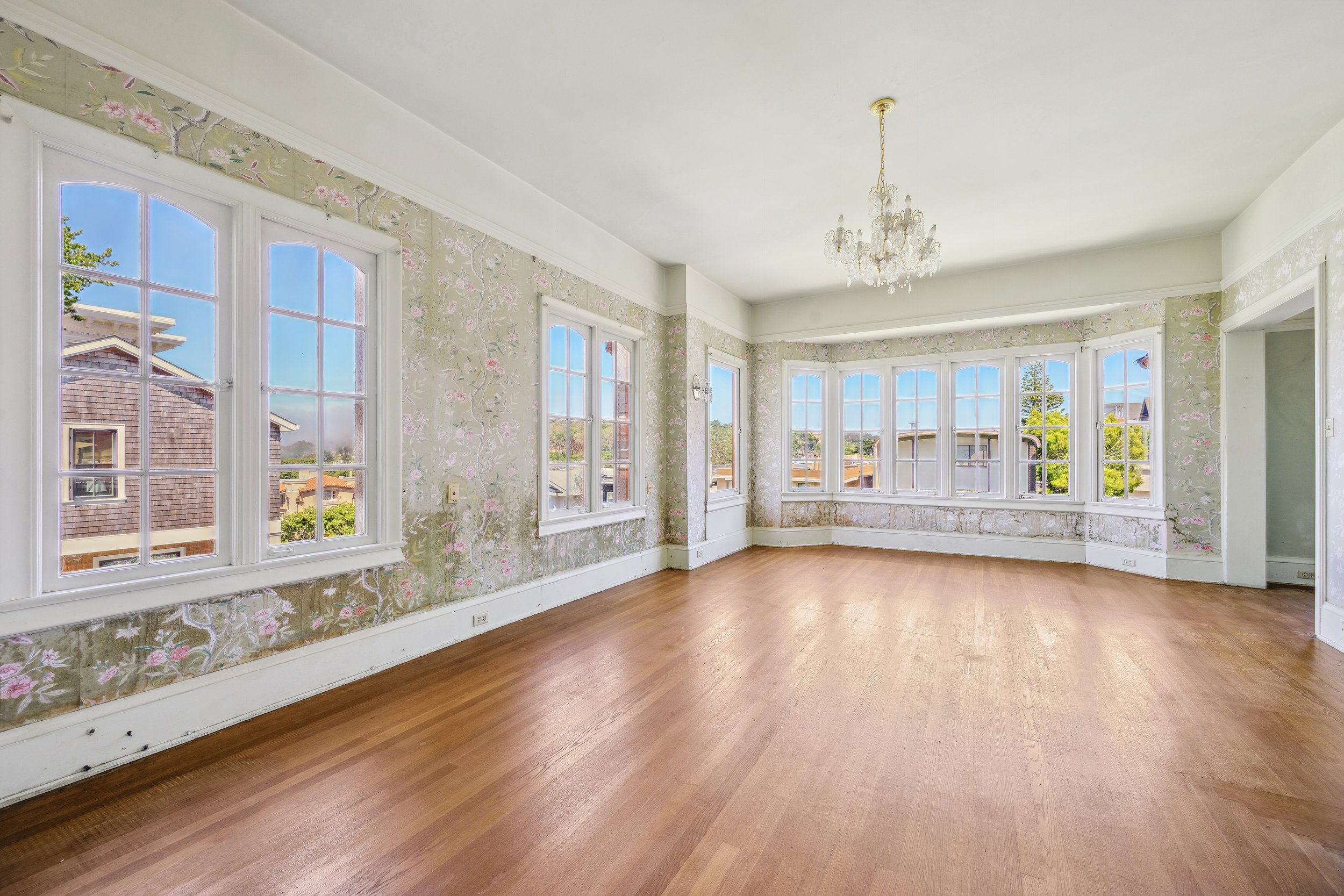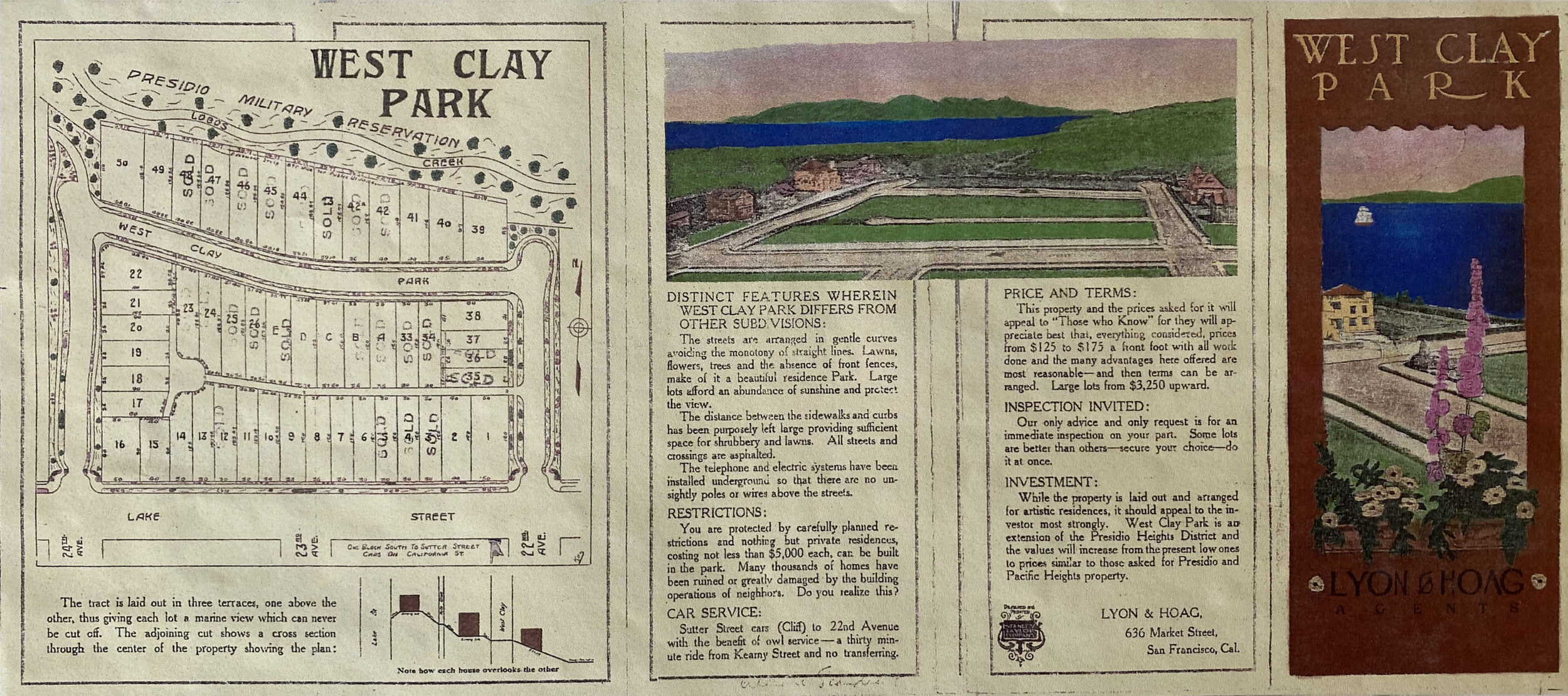Historic West Clay Park Residence
Offered at $3,995,000
An Introduction
The current offering of 183 24th Avenue presents a rare opportunity to reimagine a historically preserved home from 1910. The interior architectural stewardship under the same family for one hundred years presents a look into the craftsmanship and European Beaux Arts design influence during the post-quake years of San Francisco's residential development. Sitting on an elevated lot overlooking the West Clay Park neighborhood and the Presidio, the home enjoys romantic outlooks and tremendous natural light. The estate parcel measures 85’ x 120’ and offers the creative potential for a luxurious garden surrounding the half-timbered home. A recently constructed ADU further enhances the versatility of this property. This AS-IS sale represents a landmark moment to revitalize a long-held treasure of San Francisco’s architectural heritage.


























Property Details
Within the bustle of the city, 183 24th Avenue captures the essence of residential park living. Upon entering the residence, one is immediately drawn to the architectural elegance and detailing of the classical interior millwork. The entry foyer leads to a spacious living room that is accented by a wood burning fireplace and diamond patterned windows overlooking West Clay Park. High beamed ceilings and classical columns underscore the yesteryear ambience of the interiors. A peaked ceiling ante-room connects from the living room for use as a private office or library. Through pocket doors, one enters the formal dining room that connects to a kitchen and en-suite bedroom. The second level of the residence is comprised of four bedrooms and two baths. The finished attic level includes one bedroom and bath. The basement level is comprised of two rooms. The rear portion of the lot includes a recently completed one bedroom ADU. Additionally, there is a carport and storage area.
This is an AS-IS sale. Buyers are encouraged to conduct thorough investigations of the property prior to submitting an offer.
West Clay Park: A Quintessential San Francisco Neighborhood
Classic San Francisco. Community. Natural beauty. These are some of the many words that the neighborhood of West Clay Park evokes. As one of a number of residential parks that were successfully developed in San Francisco, the West Clay Park neighborhood was immediately recognized by city residents as a unique opportunity to enjoy the benefits of suburban living within the city limits. The natural beauty afforded by this location cannot be overstated. It is no wonder that Ansel Adams and his family were longtime residents of the neighborhood. With direct access to Baker Beach and the Land’s End hiking trails, scenic biking trails and golf at Lincoln Park, and surfing for the brave at heart, activity filled days await. For the more culturally inclined, the Legion of Honor museum is nearby, housing the city’s European art collections and important traveling shows. The neighborhood is filled with local stores and the business district of Clement Street has numerous restaurants. West Clay Park is an eco-system unto itself, offering the traditions and small town feel of San Francisco’s days gone by.
Sales Brochure for West Clay park (1910)
A History of the Early 20th Century Residential Park
Influenced by nineteenth-century American suburban ideals and the City Beautiful movement, San Francisco developers created eight subdivisions of spacious and thoughtfully designed single-family houses surrounded by classically inspired landscaping between 1906 and 1940. Called “residence parks” to emphasize the park-like setting, a larger parcel was developed to form a private enclave separate from the city’s thoroughfares. These subdivisions laid out the streets and lots to follow the existing topography and create a setting that fulfilled the ideal of domestic life in a semi-rural environment.
The origins of residence parks can be found in earlier movements to create master-planned communities called “garden suburbs.” Robert A. M. Stern, in his magisterial book, Paradise Planned, identified the existence of at least twenty garden suburbs built before 1900 in the United States, and 145 by 1920. San Francisco’s residence parks are what Stern calls “garden enclaves,” neighborhood versions of a garden suburb, sharing many of the same ideals and traits, but enclosed within the city limits. These communities promised a “park in the city,” not a house in the suburbs.
On March 30, 1910, the Boston Investment Company filed a subdivision map with the city, drawn by engineer William B. Hoag, for West Clay Park. The name “West Clay Park” referred to a new street created by the developers, West Clay, chosen to perpetuate an association with Clay Street in Presidio Heights, 22 blocks east. The site slopes downward from Lake Street to Lobos Creek, which allowed the developers to terrace the tract and provide many of the houses with marine views of the Golden Gate to the north. In January 1911, the real estate agency Lyon & Hoag claimed West Clay Park was “The Most Successful Real Estate Sale of 1910.” By March 1911, only 14 of the original 50 lots were left. Whether or not West Clay Park was the most successful real estate sale of 1910, it quickly achieved local prominence. Today, this neighborhood is known for its tight knit community lifestyle, one that carries forward the traditions and small town feel of San Francisco’s post-war era. A rare opportunity to experience a time gone by in the city’s modern era.
Offered at $3,995,000
Historic Opportunity to Reimagine a 1910 West Clay Park Estate
7 bd. / 5.5 ba. / 2+ Car Parking
Golden Gate Bridge Tower Views
Well Preserved Classical Interiors
85’ x 120’ Flat Garden Lot
Wood Paneled Formal Living and Dining Rooms
Master Suite with GGB Views
Recently Built One Bedroom ADU
Immediate Access to Golden Gate National Recreation Area
Ideal Residential Park Living within the City Limits
183 24th Avenue



